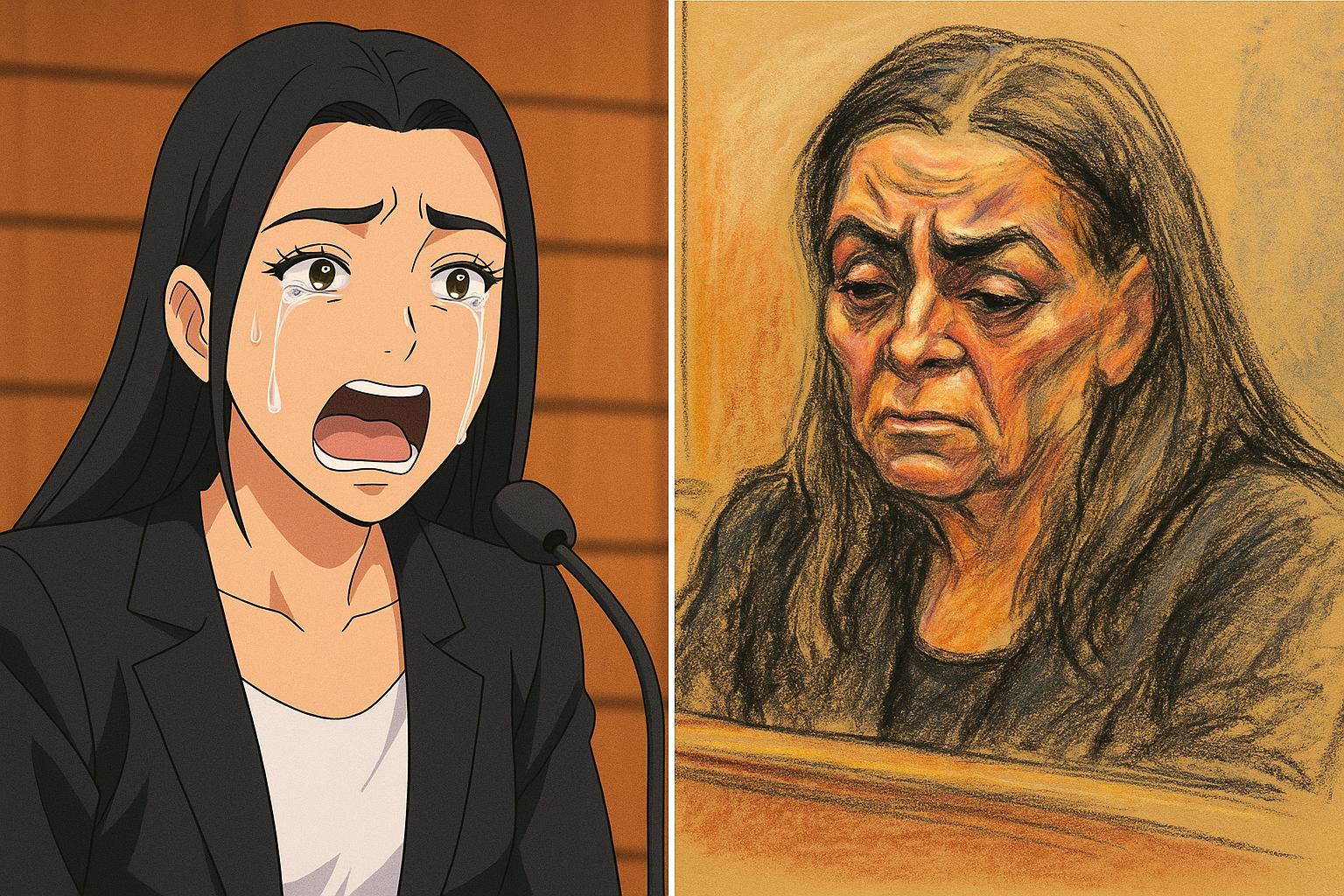In the world of high-profile court cases, the courtroom sketch artist's task is a challenging one, particularly when it comes to rendering the iconic visages of A-list celebrities. Recently, Kim Kardashian took the stand in a Paris court regarding her 2016 jewellery heist, during which she was held at gunpoint and robbed of millions in valuables. The sketches that emerged from this trial have sparked a wave of comments for all the wrong reasons, with Kardashian depicted in a manner that many have deemed unflattering and cartoonish.
Kardashian's emotional testimony recounted the harrowing events of that night, where masked intruders posing as police officers invaded her hotel room during Paris Fashion Week. Armed and aggressive, they tied her up while demanding jewellery, causing her to fear for her life. The stark difference between her glamorous public persona and the raw emotion she exhibited on the stand became even more pronounced through the artist's depiction. In stark contrast to her usual flawless image, the sketch presented her with a pinched face and an expression of shock as she recounted the trauma she still grapples with today.
This incident drawn the attention of media commentary, particularly as it highlights the growing concern among celebrities regarding their safety due to the visibility brought about by social media. The aftermath of the robbery not only affected Kardashian but has since had a ripple effect, prompting other stars to reconsider their digital footprints. She now advocates for heightened security and caution, especially following the revelation that the attackers had exploited her social media presence to track her movements.
Despite the emotional upheaval, Kardashian's response to her harrowing ordeal shows a remarkable degree of resilience. As detailed in her court testimony, she expressed forgiveness towards one of the defendants—a letter read aloud in court had left her visibly emotional. This desire for closure indicates a broader narrative about overcoming trauma and reclaiming one's narrative, something many personalities struggle to balance in the public eye.
The plight of court sketch artists also gained fresh scrutiny, as similar unflattering sketches emerged from other high-profile cases involving celebrities. In past trials, figures such as Tom Brady and Taylor Swift faced similar artistic woes. Brady's sketched likeness inadvertently sparked ridicule, prompting court artist Jane Rosenberg to apologise for her portrayal, which evoked comparisons to various fictional characters. These inadvertently comedic representations contrast sharply with the serious nature of the trials, illustrating the difficulty of capturing likeness under strict time constraints.
Other celebrities have also been subjected to less-than-flattering artistic renditions. Kylie Jenner found herself shocked by her own courtroom sketch during a defamation case involving Blac Chyna, where her portrayal bore little resemblance to her glamorous public image. Similarly, Rebekah Vardy's courtroom rendering during the infamous 'Wagatha Christie' trial showcased her in an unflattering light, cementing her place alongside other stars whose courtroom experiences have resulted in unkind sketches.
As these narratives unfold, the intersection of celebrity culture and media representation continues to provoke discussion. The court sketches become more than just visual interpretations; they reflect the complexities of fame, vulnerability, and the unrelenting gaze of public scrutiny, often seen through a critical, artistic lens that fails to capture the essence of those depicted. As such, the tales of these stars in the courtroom become an extended commentary on society's perception of celebrity—their triumphs, tribulations, and the irony of how quickly their images can be transformed into something less than flattering, even in hallowed halls of justice.
As celebrities navigate the complexities of their lives under the scrutiny of public scrutiny, the emotional toll of such experiences contrasts starkly with the often humorous, distorted sketches that result. In a world where image is everything, the court sketch serves as both a reflection of the artist's interpretation and a reminder of the very human struggles behind the glitz and glamour.
Reference Map
1: Paragraphs 1, 2, 3, 4, 5, 9
2: Paragraphs 1, 2, 3, 5, 6
3: Paragraphs 1, 2, 5
4: Paragraphs 1, 3, 5
5: Paragraphs 1, 4
6: Paragraphs 1, 5
7: Paragraphs 4, 6
Source: Noah Wire Services
